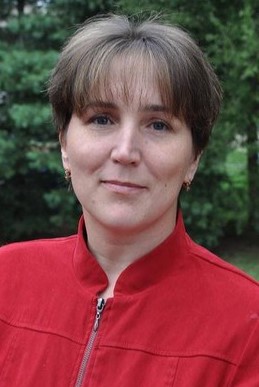MSU team receives $750K to explore climate change mitigation potential of switchgrass
The grant is through USDA's National Institute of Food and Agriculture and the Agriculture and Food Research Initiative.

EAST LANSING, Mich. — A team of Michigan State University researchers has received a $750,000 grant from the U.S. Department of Agriculture’s National Institute of Food and Agriculture to investigate the climate change mitigation potential of switchgrass cropping systems.
The group is led by Christopher Blackwood, a professor in the departments of Plant Biology and Plant, Soil and Microbial Sciences (PSM), as well as the Ecology, Evolution and Behavior Program.
Joining Blackwood from MSU are Andrey Guber and Alexandra Kravchenko, professors in PSM, and David Lowry, an associate professor in the Department of Plant Biology.
Native to North America, switchgrass is one of the primary species occurring in tall grass prairies east of the Rocky Mountains. Traditionally used as animal feedstock and as a plant that supports wildlife restoration, switchgrass has become popular in the renewable energy sector in recent years.
Switchgrass has been recognized as a good candidate for biofuel production due to its high yields and resilient characteristics. It does not require a multitude of inputs, while growing in a variety of soil types and climatic conditions.
Despite its many qualities, Blackwood said that switchgrass is notoriously slow at generating soil carbon gains, which promote soil health and environmental sustainability. Researchers want to better understand what can be done to develop solutions that bolster carbon sequestration.
“We think there are a couple of ways to approach this problem,” said Blackwood, whose research is also supported in part by MSU AgBioResearch. “First, we can identify characteristics of the various switchgrass cultivars that promote soil carbon gains and breed for those. Secondly, we believe the diversification of switchgrass cropping systems can help address this issue. Growing switchgrass by itself may not yield the carbon gains we want, but when grown alongside complementary plants, we think there could be some promising results.”
For the first objective, Blackwood and his colleagues will evaluate the soil carbon accrual potential of several switchgrass cultivars across three locations: Michigan, Missouri and Texas. These spots were chosen due to their vast differences in climates, soils and overall environmental conditions.
Blackwood said that each of these switchgrass stands has been in place for roughly six years, providing enough time to generate detectable differences in soil structure and carbon.
“The general concept of our study is built on plant-soil-microbial interactions as the multifaceted driver of soil carbon gains,” he said. “These belowground interactions among plant roots, mycorrhizae (fungus) and soil pore structure all dictate carbon capture. We hypothesize that switchgrass cultivars and their root structures interact differently in various types of soils, as well as with different types of plants around them, so it’s a complex system that we need to learn more about to classify what the ideal conditions are. Once these traits are identified, we can ultimately share this information with plant breeders.”
The second objective is to assess which prairie plants can be added to switchgrass systems to most effectively bolster soil carbon, then measure how long it takes to see gains. These studies will be conducted in collaboration with the W.K. Kellogg Biological Station’s (KBS) ongoing switchgrass neighbor experiment. At KBS, switchgrass is grown alongside forbs (herbaceous non-grasses), grass and legumes.

Researchers will observe if switchgrass root systems change depending on neighboring plants and if fungal species colonize both switchgrass and other species in advantageous ways.
The third objective will allow the team to take the information from the first two and explore causative effects on soil carbon capture from the identified soil and root characteristics.
Once the project has concluded, researchers will share findings across multiple platforms, utilizing communication and extension resources from KBS and MSU more broadly. Target audiences include farmers, commodity organizations, policy makers and the general public.
“The exciting thing about this research is that it will provide a holistic view of the mechanisms that determine soil carbon capture,” Kravchenko said. “We’ve assembled a great interdisciplinary team with complementary expertise, in addition to some additional partnerships with KBS and the Great Lakes Bioenergy Research Center.
“We think this work can add economic value to switchgrass cropping systems and promote them as an environmentally sustainable agricultural commodity.”
Michigan State University AgBioResearch scientists discover dynamic solutions for food systems and the environment. More than 300 MSU faculty conduct leading-edge research on a variety of topics, from health and climate to agriculture and natural resources. Originally formed in 1888 as the Michigan Agricultural Experiment Station, MSU AgBioResearch oversees numerous on-campus research facilities, as well as 15 outlying centers throughout Michigan. To learn more, visit agbioresearch.msu.edu.



 Print
Print Email
Email




